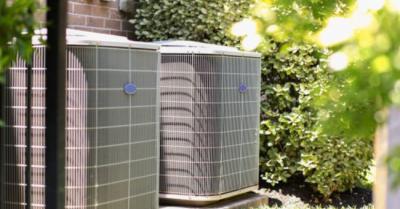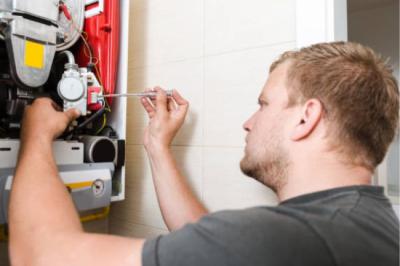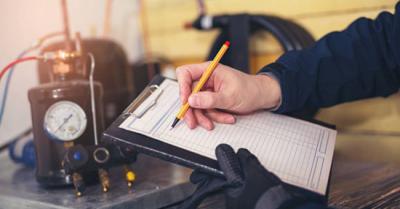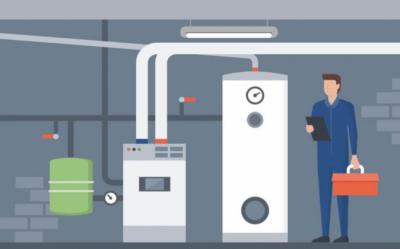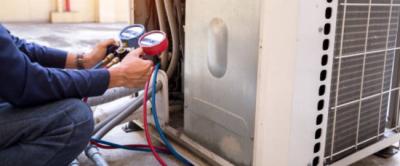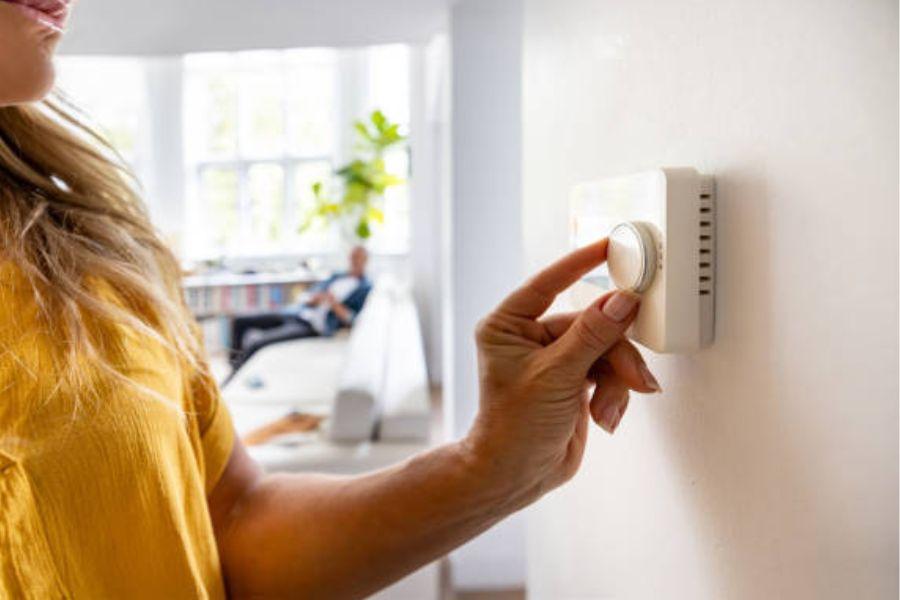
Troubleshooting HVAC Auto Setting Malfunctions on Your Thermostat: A Guide
The HVAC system is crucial to modern comfort in residential and commercial buildings. The thermostat serves as the control center for regulating temperature, and the auto setting is particularly convenient for maintaining a comfortable environment automatically. However, when the auto setting malfunctions, it can disrupt the efficiency and comfort of the HVAC system.
In this blog, we will explore why the auto setting on an HVAC thermostat may not work correctly.
Here are some of the issues we'll cover:
-
Incorrect Thermostat Settings
-
Power Supply Problems
-
Dust and Debris Accumulation
-
Sensor Calibration
-
HVAC System Maintenance
-
Compatibility Issues
-
Software Updates
By understanding these issues and their solutions, you can effectively troubleshoot your thermostat and ensure uninterrupted comfort in your home. If the case is complicated, you can consult professionals like Waynes Heating & AC to get your HVAC auto thermostat working.
Let’s dig in!
How do Auto Thermostats Work?
In auto mode, the thermostat controls the HVAC system to maintain the desired temperature range automatically. The air conditioner is activated to cool the space when the temperature rises above the set point.
Conversely, the heater is activated to warm the space when the temperature falls below the set point. The auto setting allows for hands-free temperature regulation, providing comfort and energy efficiency.
Now, let’s talk about why the HVAC auto setting on the thermostat is not turning on.
Common Issues and Troubleshooting
Incorrect Thermostat Settings:
The first step in troubleshooting a thermostat is to verify the settings. Ensure the thermostat is in auto mode instead of continuous fan or off mode. In addition, ensure that the temperature set points are adequate for the required comfort level.
Power supply issues:
A power supply problem might cause an HVAC auto setting on the thermostat not to work. Check for power by ensuring that the thermostat is correctly connected to the electrical circuit and that there are no tripped circuit breakers or blown fuses. If batteries power the thermostat, replace them and see if it fixes the problem.
Dust and Debris Accumulation:
Dust and dirt may collect in the thermostat, causing it to malfunction. Carefully remove the thermostat cover and clean any dust and dirt using compressed air or a soft brush. Ensure that the thermostat's components are clear of obstructions.
Sensor calibration:
Many thermostats employ temperature sensors to determine the ambient temperature properly. If the sensor is not calibrated correctly, it may provide erroneous temperature readings and cause the HVAC system to malfunction. For instructions on calibrating the temperature sensor, see the thermostat handbook or get help from a professional technician.
HVAC System Maintenance:
In certain circumstances, the problem may not be with the thermostat but with the whole HVAC system. Inadequate maintenance may cause various issues, including airflow limits, clogged filters, and malfunctioning components. To ensure that your HVAC system performs optimally, schedule routine maintenance inspections from experts like Waynes Heating & AC.
Compatibility Issues:
Compatibility difficulties may occur after updating your HVAC system or thermostat. Ensure the thermostat is compatible with your HVAC system and fits correctly according to the manufacturer's recommendations. Incompatible thermostats may not regulate the HVAC system properly, resulting in auto-setting problems.
Software Updates:
Some smart thermostats are updated regularly with new software to enhance performance and fix faults. Check whether your thermostat has any available updates, then install them according to the manufacturer's recommendations. Software upgrades may alleviate difficulties with auto-setting malfunctions.
Conclusion:
A faulty auto setting on a thermostat may disturb the comfort and efficiency of your HVAC system. Understanding typical difficulties and following the troubleshooting procedures given in this blog can help you discover and handle underlying problems efficiently.
Remember to refer to the thermostat handbook for detailed instructions and consider obtaining help from experts like Waynes Heating & AC if necessary.
With appropriate maintenance and troubleshooting, you can guarantee that your HVAC system runs smoothly and offers consistent temperature control in your home or office.
Frequently Asked Questions
Why is my thermostat not working on auto?
One of the most common reasons thermostats don't work is dead batteries. If the thermostat's batteries are dead, the thermostat will not be functional. Therefore, you will need to replace its batteries. If the thermostat still does not work after you do this, you may need to call a professional for help.
Why will a blower run on the on position and not on auto?
Suppose the blower starts by turning the thermostat fan switch to the "On" position but does not turn on automatically after the burners have ignited. In that case, this may indicate a faulty heat-activated switch.
Why is my central heat not working on auto?
Ensure your thermostat is set to “auto” instead of “on.” Otherwise, your problem could be one of two issues: your thermostat is broken or not wired correctly.
This is by far the best Heating and Air company I have ever dealt with. Jeff and Toby are the best in the business! A simple service call turned out to be a new HVAC installation replacement of my 22 year-old unit in just 2 days. The price was very fair and the quality of the workmanship is the best I've ever encountered. Outstanding customer service. Jeff has certainly created a five-star company here.
- Tom Klein
